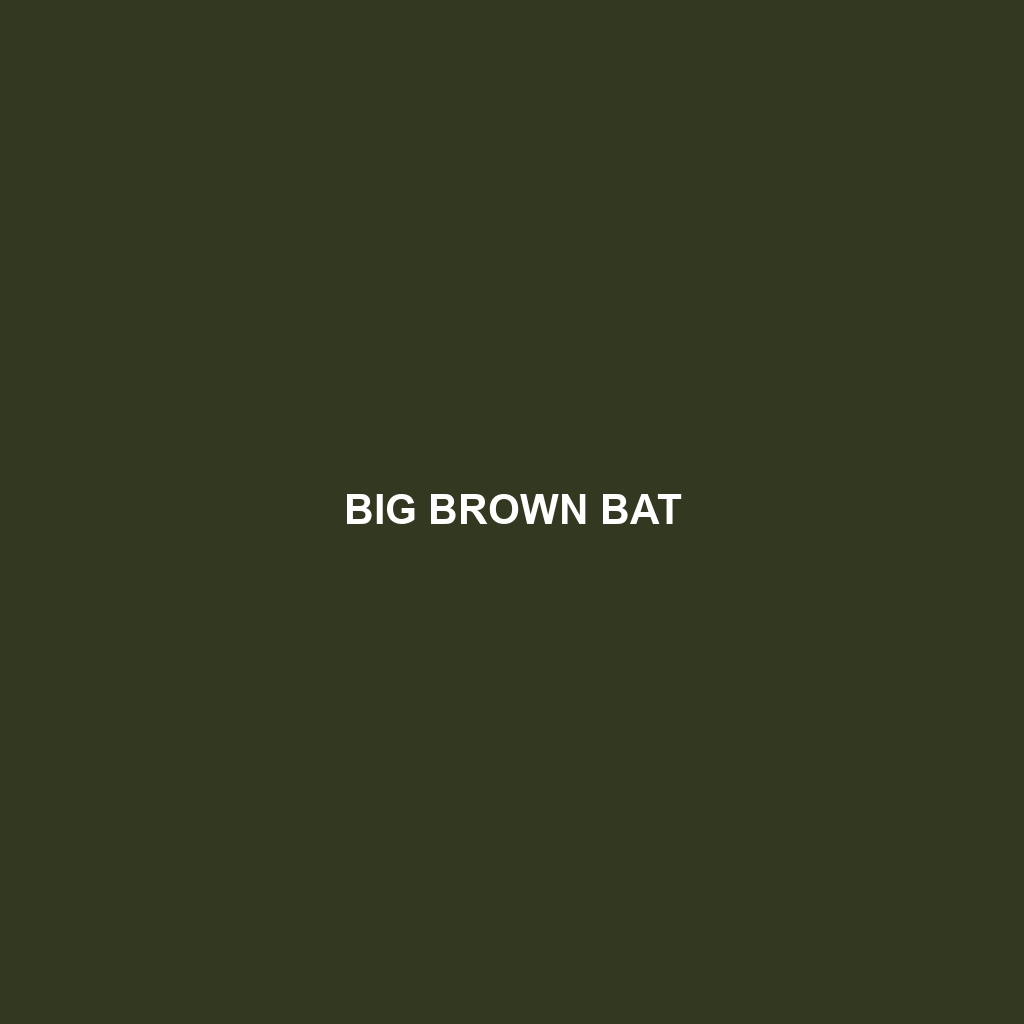Big Brown Bat (Eptesicus fuscus) – Species Description
Common Name: Big Brown Bat
Scientific Name: Eptesicus fuscus
Habitat
The Big Brown Bat is primarily found across North America, ranging from southern Canada to Mexico. This adaptable species often inhabits a variety of environments, including forests, urban areas, and agricultural regions. They usually roost in buildings, tree hollows, and under bridges, preferring locations that offer protection and proximity to foraging areas.
Physical Characteristics
The Big Brown Bat typically measures between 12 to 14 cm in body length, with a wingspan of about 30 to 35 cm. They are characterized by their large size compared to other bat species. Their fur is generally a rich brown color, with lighter underparts, and they possess broad, rounded wings. Notable features include their wide, flat heads and large eyes, which enhance their nocturnal vision.
Behavior
Known for its nocturnal activity, the Big Brown Bat engages in a variety of behaviors. They are typically seen foraging for insects in flight at dusk and are capable of navigating using echolocation. During the day, these bats roost in groups, often hanging upside down in clusters. Their social nature and communal roosting practices are of interest to researchers studying bat behavior.
Diet
The diet of the Big Brown Bat primarily consists of flying insects, such as moths, beetles, and flies. This species is particularly effective at controlling pest populations in agricultural settings, making them a vital ally for farmers. Their foraging habits involve catching insects mid-air, showcasing their agility and proficiency as hunters.
Reproduction
Breeding seasons for the Big Brown Bat usually occur in late summer, with females forming maternity colonies to raise their young. Females typically give birth to one pup per year, which they nurse for several weeks. Their reproductive behaviors, including courtship rituals and colonial nesting, play a crucial role in their life cycle.
Conservation Status
The Big Brown Bat is currently classified as a species of “Least Concern” by the IUCN. However, their populations face threats from habitat loss and diseases such as White-nose Syndrome, which has affected many bat species in North America. Conservation efforts are essential to monitor and protect their populations.
Interesting Facts
– The Big Brown Bat can consume up to 1,200 insects in one night, significantly benefiting agricultural ecosystems.
– Their echolocation abilities allow them to detect objects as small as a pencil in complete darkness.
Role in Ecosystem
As insectivores, Big Brown Bats play a crucial role in maintaining healthy ecosystems by controlling insect populations. Their presence provides essential natural pest control, reducing the need for chemical pesticides in agricultural practices. Furthermore, they serve as prey for larger predators, thus contributing to the food web dynamics within their habitats.
